Clint Solomon Mathialagan
Self-Aware Feedback-Based Self-Learning in Large-Scale Conversational AI
Apr 29, 2022
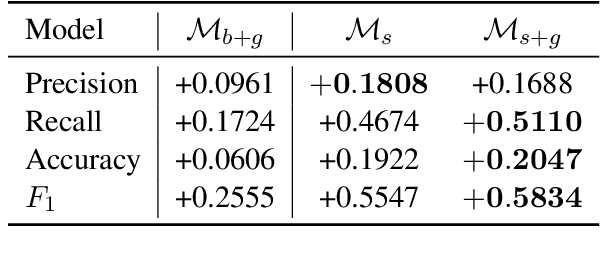
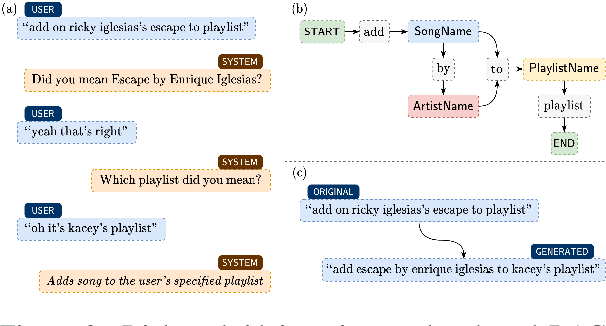
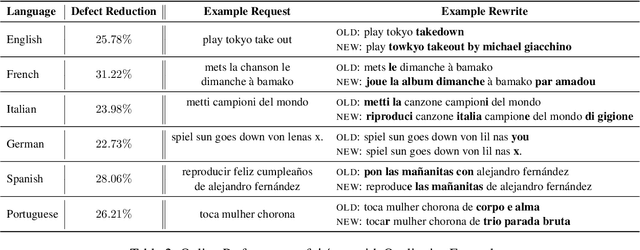
Abstract:Self-learning paradigms in large-scale conversational AI agents tend to leverage user feedback in bridging between what they say and what they mean. However, such learning, particularly in Markov-based query rewriting systems have far from addressed the impact of these models on future training where successive feedback is inevitably contingent on the rewrite itself, especially in a continually updating environment. In this paper, we explore the consequences of this inherent lack of self-awareness towards impairing the model performance, ultimately resulting in both Type I and II errors over time. To that end, we propose augmenting the Markov Graph construction with a superposition-based adjacency matrix. Here, our method leverages an induced stochasticity to reactively learn a locally-adaptive decision boundary based on the performance of the individual rewrites in a bi-variate beta setting. We also surface a data augmentation strategy that leverages template-based generation in abridging complex conversation hierarchies of dialogs so as to simplify the learning process. All in all, we demonstrate that our self-aware model improves the overall PR-AUC by 27.45%, achieves a relative defect reduction of up to 31.22%, and is able to adapt quicker to changes in global preferences across a large number of customers.
A Vocabulary-Free Multilingual Neural Tokenizer for End-to-End Task Learning
Apr 22, 2022
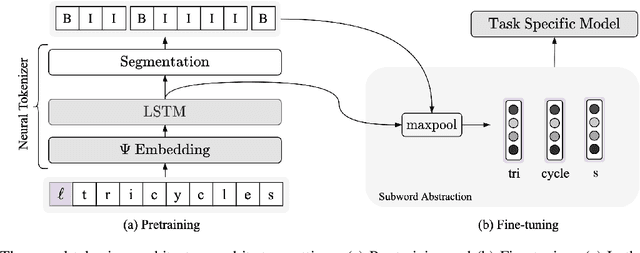


Abstract:Subword tokenization is a commonly used input pre-processing step in most recent NLP models. However, it limits the models' ability to leverage end-to-end task learning. Its frequency-based vocabulary creation compromises tokenization in low-resource languages, leading models to produce suboptimal representations. Additionally, the dependency on a fixed vocabulary limits the subword models' adaptability across languages and domains. In this work, we propose a vocabulary-free neural tokenizer by distilling segmentation information from heuristic-based subword tokenization. We pre-train our character-based tokenizer by processing unique words from multilingual corpus, thereby extensively increasing word diversity across languages. Unlike the predefined and fixed vocabularies in subword methods, our tokenizer allows end-to-end task learning, resulting in optimal task-specific tokenization. The experimental results show that replacing the subword tokenizer with our neural tokenizer consistently improves performance on multilingual (NLI) and code-switching (sentiment analysis) tasks, with larger gains in low-resource languages. Additionally, our neural tokenizer exhibits a robust performance on downstream tasks when adversarial noise is present (typos and misspelling), further increasing the initial improvements over statistical subword tokenizers.
Personalized Query Rewriting in Conversational AI Agents
Nov 09, 2020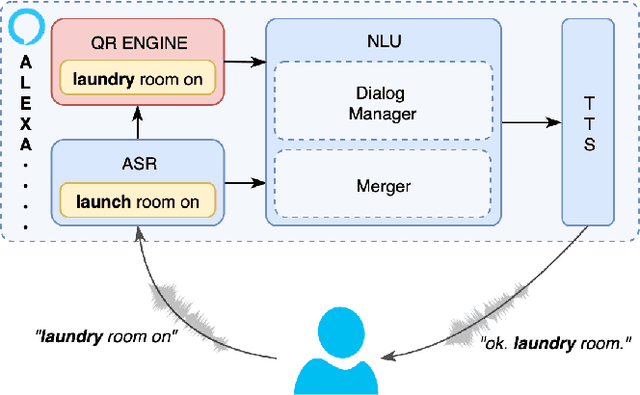

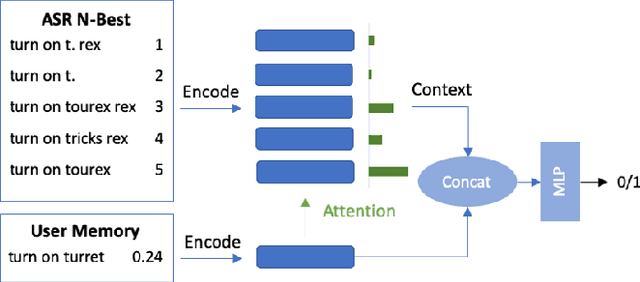
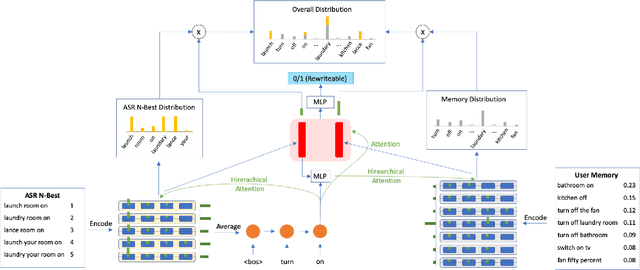
Abstract:Spoken language understanding (SLU) systems in conversational AI agents often experience errors in the form of misrecognitions by automatic speech recognition (ASR) or semantic gaps in natural language understanding (NLU). These errors easily translate to user frustrations, particularly so in recurrent events e.g. regularly toggling an appliance, calling a frequent contact, etc. In this work, we propose a query rewriting approach by leveraging users' historically successful interactions as a form of memory. We present a neural retrieval model and a pointer-generator network with hierarchical attention and show that they perform significantly better at the query rewriting task with the aforementioned user memories than without. We also highlight how our approach with the proposed models leverages the structural and semantic diversity in ASR's output towards recovering users' intents.
CloudCV: Large Scale Distributed Computer Vision as a Cloud Service
Feb 13, 2017



Abstract:We are witnessing a proliferation of massive visual data. Unfortunately scaling existing computer vision algorithms to large datasets leaves researchers repeatedly solving the same algorithmic, logistical, and infrastructural problems. Our goal is to democratize computer vision; one should not have to be a computer vision, big data and distributed computing expert to have access to state-of-the-art distributed computer vision algorithms. We present CloudCV, a comprehensive system to provide access to state-of-the-art distributed computer vision algorithms as a cloud service through a Web Interface and APIs.
VIP: Finding Important People in Images
Apr 17, 2015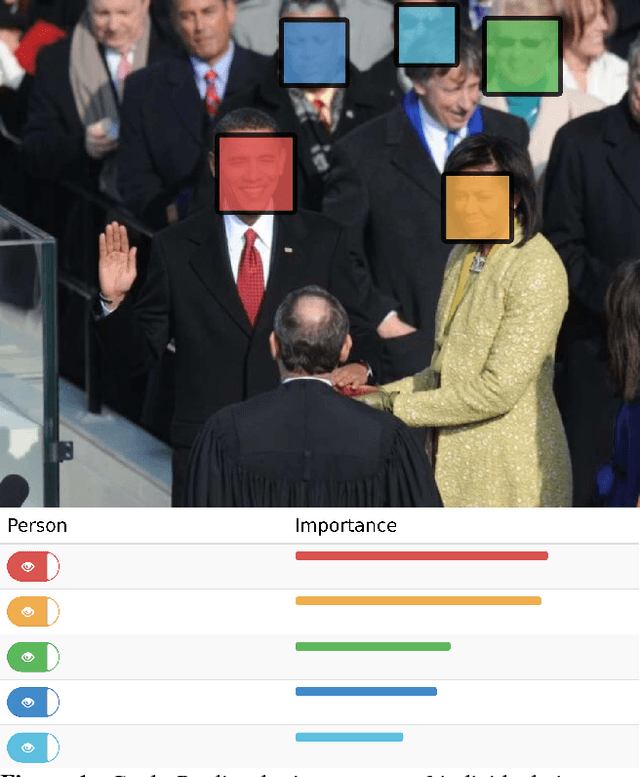



Abstract:People preserve memories of events such as birthdays, weddings, or vacations by capturing photos, often depicting groups of people. Invariably, some individuals in the image are more important than others given the context of the event. This paper analyzes the concept of the importance of individuals in group photographs. We address two specific questions -- Given an image, who are the most important individuals in it? Given multiple images of a person, which image depicts the person in the most important role? We introduce a measure of importance of people in images and investigate the correlation between importance and visual saliency. We find that not only can we automatically predict the importance of people from purely visual cues, incorporating this predicted importance results in significant improvement in applications such as im2text (generating sentences that describe images of groups of people).
 Add to Chrome
Add to Chrome Add to Firefox
Add to Firefox Add to Edge
Add to Edge